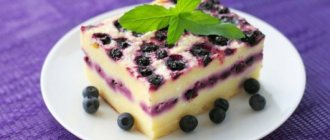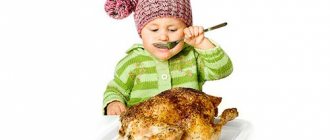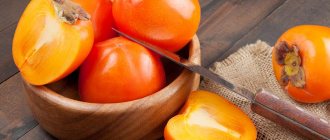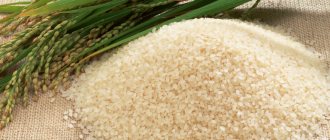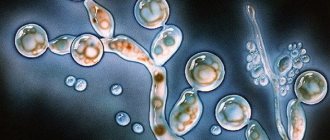There has long been debate about the benefits and harms of salt. This is an excellent universal seasoning that improves the taste of a dish and makes food more varied. Interestingly, your daily diet must include 5 grams of salt. However, an excess of this product can cause many negative consequences.
First of all, this is swelling, high blood pressure, a high risk of kidney and liver diseases, digestion and heart disease, an allergic reaction and other negative factors. Therefore, it is not recommended to give salt to children under one year of age, while the baby’s body is just adapting to new food.
A nursing mother should also reduce the amount of consumption of this product and not add too much salt to the food. Food that is too salty clogs the ducts, causing fluid to accumulate in the body, which impairs lactation and breast milk production. Let's find out in more detail how to properly use salt while breastfeeding, when you can add salt to your baby's food.
Composition and calorie content
Fresh and pickled cucumbers have positive qualities. They contain many nutrients. Cucumbers contain small amounts of proteins, fats and carbohydrates. The main part of the vegetable is water.
Fresh cucumbers contain vitamins B, PP, E, and minerals (iodine, calcium, iron, fluorine, magnesium, etc.). Thanks to its rich composition, this vegetable is one of the most common and beloved. Calorie content of 100 g of cucumbers is only 14 kcal.
These beneficial substances are only partially transferred into pickled cucumbers.
Is it possible to eat cucumbers during breastfeeding?
A nursing mother should remember precautions when consuming many foods.
Can I have pickles while breastfeeding or not? Having tried them for the first time, the woman should pay attention to any changes that occurred with the baby at this time:
- whether the stool is broken;
- the baby did not experience increased gas formation;
- whether he has become irritable and nervous;
- whether he has a rash or redness on his body.
Therefore, all questions about whether it is possible to pickle cucumber while breastfeeding are resolved individually. If the baby’s body reacted negatively to the inclusion of this vegetable in the diet, then it is necessary to completely abandon them.
According to many pediatricians, when including pickles in the diet, it is important to constantly monitor the child’s condition. After all, they can provoke colic and increased gas formation.

From what month should you include pickled cucumbers in your diet?
Women ask when they can eat pickles during breastfeeding. The vegetable has many beneficial properties. Salted or pickled cucumbers increase appetite and also normalize the digestion process. They contain a lot of fiber. However, do not forget that salty foods can retain water in the body, so they should be consumed with caution.
The digestive system of a breastfed baby is still very weak. Therefore, a woman should think through her diet especially carefully. This will prevent the development of discomfort and disorders of the gastrointestinal tract.
A nursing mother should be especially careful when eating dishes that contain pickled cucumbers. Even if all other components are perceived normally by the baby. Such dishes include vinaigrette.
When breastfeeding a newborn, it is best to include pickles in the diet after he is 4 months old.
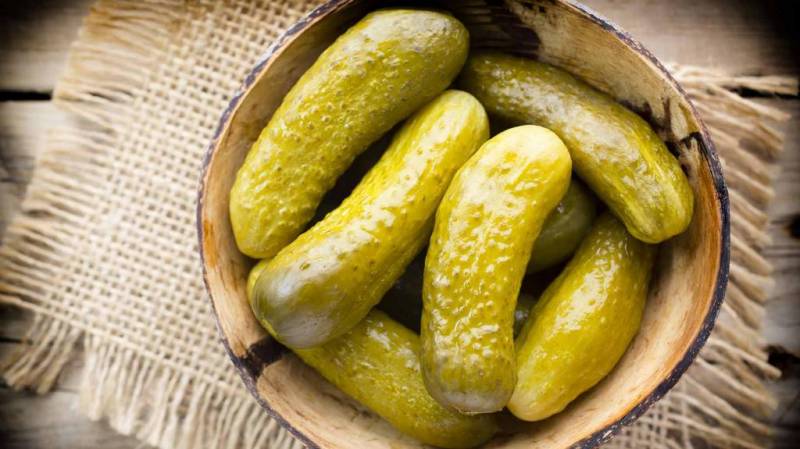
Is it possible for nursing mothers to eat seaweed?
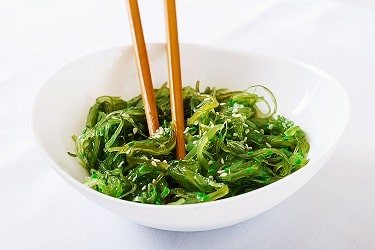
Laminaria contains a lot of iodine and other micronutrients. The product can cause loose stools or allergies in infants, so mothers often ask whether nursing mothers can eat seaweed.
Table of contents
|
Product properties
Kelp is a type of seaweed that can be eaten. It is mined on the Pacific coast in the Far East.
Laminaria is considered a dietary dish.
It can be cooked with vegetables, seafood, mushrooms, eggs, corn, and legumes.
The calorie content of seaweed per 100 g ranges from 49 to 205-500 kcal, depending on the type of preparation (pickled, canned, dried, frozen).
The product contains the following beneficial substances:
• Iodine is necessary for the normal functioning of the thyroid gland, the production of the hormones thyroxine and triiodothyronine.
• Vitamin C is an antioxidant that increases the body's immune defense.
• Vitamin A - contributes to the normal functioning of the organ of vision.
• Alginic acid - removes toxic substances from the body.
• Plant fiber helps remove toxins from the intestines, improves digestive function, and relieves constipation.
• Polyunsaturated fatty acids help remove cholesterol, stop arrhythmias, and prevent the development of atherosclerosis.
• Iron - increases hemoglobin concentration, relieves postpartum anemic syndrome.
In addition to these substances, the product contains phosphorus and magnesium.
If you add kelp to your menu every day, the risk of diabetes and cancer pathologies is reduced.
Is it possible for nursing mothers to eat seaweed - beneficial properties, who should not
It is recommended that a nursing woman include seaweed in her diet.
The product relieves anemia. Anemia during pregnancy and childbirth is very common.
In the postpartum period, anemic syndrome is caused by severe blood loss during the birth of the baby, as the vessels of the uterus gape after the placenta leaves.
Useful tips for mothers: NUTRITION FOR A NURSING MOTHER
Laminaria also relieves constipation, which is also caused by decreased peristalsis due to pregnancy.
In the first six months, some women continue to experience stool retention, which causes discomfort.
Laminaria helps improve the functioning of the thyroid gland.
During pregnancy, the load on the thyroid gland increases.
The thymus also works hard during breastfeeding to provide the baby with milk.
Without normal functioning of the thyroid gland, lactation function fades and the quality of milk becomes worse.
Should not be included in the diet for the following pathologies:
- haemorrhoids;
- pathologies of the kidneys and gallbladder;
- tuberculosis of the lungs;
- endocrine diseases (only as prescribed by a doctor).
The product should not be used before 3 months of the baby's life.
Laminaria has a pronounced laxative effect, which provokes colic during the period of adaptation of the digestive tract.
An allergic reaction to the product may occur, which leads to a rash on the body, swelling of the skin, and redness.
You should not eat seaweed if a woman has a history of an allergic reaction.
It is not advisable to use the product for food when there is a pathology of the pancreas, since kelp has an irritating effect.
Does seaweed affect the taste of milk secretion?
Laminaria itself has a specific smell and taste.
Many women believe that when using the product, the taste of milk changes.
Because of this, mothers rarely add kelp to their diet.
This opinion is wrong!
Scientific studies have not proven that the taste of a woman’s milk changes when she eats seaweed.
Therefore, the product can be included in the menu, but only in reasonable dosages.
How to include in your diet
After the child is 3 months old, it is permissible to begin introducing seaweed.
The child must be healthy and free of rashes and other signs of illness.
The mother should try the first portion in the morning to watch the baby.
For the first test, 5-10-20 grams are enough.
Then the baby is monitored throughout the day.
If rashes, redness on the skin, diarrhea and colic do not appear, then it is permissible to continue the introduction of kelp.
The portion is increased every day to the daily requirement.
How much can you eat
You can eat seaweed 2-3 times a week. The daily amount should not exceed 150 g.
It is not advisable to eat the product at this dose more than 3 times a week.
You can eat kelp every day.
In this case, it is recommended to reduce the dosage to 50 grams. This will help avoid an overdose of iodine.
How to choose a product
Laminaria is sold dry, frozen, pickled, and canned.
For a nursing mother, frozen or condensed seaweed is recommended.
These types of products do not contain preservatives or salt and are suitable for making soups and salads.
It is better not to eat canned and pickled cabbage at all, or soak them in water before cooking.
Salted kelp can be used to make salads without adding salt to the entire portion.
Be sure to follow the expiration date written on the package.
Dried kelp should be greenish in color, without small particles, spots and other inclusions that spoil the appearance.
Frozen seaweed is selected without ice, signs of repeated thawing, and with a uniform color.
When using canned or pickled products, it is advisable to look at the composition.
The product must contain:
- salt;
- sunflower oil;
- acetic acid;
- seaweed;
- spices.
There should be no preservatives, dyes or other harmful substances.
You cannot purchase a product if it contains E 220 (sulfur dioxide) and E 621 (monosodium glutamate).
Sulfur dioxide causes pathologies of the digestive tract.
Monosodium glutamate contributes to overload of the kidneys and addiction of the body.
An allergic reaction to monosodium glutamate often occurs in mothers and infants.
Sea kale dishes
You can make soups from kelp. They are cooked in meat broth, adding potatoes, onions, peas, and vermicelli to the product.
You cannot cook soups that are fried.
Dried or frozen seaweed is suitable for making first courses.
For salads, choose dried, less often frozen cabbage. Before use, it is recommended to soak dried fruit in boiled water for 10-15 minutes.
It is permissible to boil the dry product in water for 10 minutes, but in this case most of the vitamins may be destroyed.
Also suitable for salads are pickled or canned types of product, but in small quantities, as they contain a lot of salt.
You can add to seaweed for making salads:
- carrots - contains vitamin A;
- squid - after 6 months, if the child does not have allergies;
- fish (tuna, salmon) - after 6 months of life.
- egg - from birth, if the baby has no allergies;
- cucumber, tomato, pepper, onion, green salad - add vitamins and taste to the salad;
- olive or sunflower oil - for dressing;
- corn or peas - after 6 months of the baby’s life, earlier if there are no intestinal problems.
You cannot dress salads with mayonnaise. It is harmful to the baby and mother during breastfeeding.
Laminaria is a useful product for the child and mother.
Cabbage helps normalize the thyroid gland and improve digestive function.
It additionally enriches the body with vitamins and micronutrients.
To get only the benefits from seaweed, you do not need to exceed the daily allowance of the product.
This will prevent a possible overdose of iodine.
- about the author
- Recent publications
Olga Kuznetsova
author of the publication (site editor)
DOCTOR - PEDIATRIC Education: Siberian State Medical University. Certificate of specialist in the specialty "Pediatrics"
Olga Kuznetsova recently published (see all)
- Is it possible for nursing mothers to eat seaweed - 03/04/2021
- When to introduce meat into complementary foods - 02/27/2021
- ARVI in infants - 02/13/2021
Positive properties
Women should not confuse fresh and pickled cucumbers. These are completely different vegetables, so the rules for introducing them into the diet of a nursing mother will be opposite.
What are the benefits of pickles for breastfeeding:
- stimulate appetite;
- contain fiber and have a positive effect on the baby’s stool;
- retain some vitamins E, PP, group B;
- improve the digestion process;
- include lactic acid, which is a natural antibiotic.
Also, pickled cucumbers prevent the development of constipation and improve the digestion process.
Many nursing mothers include cucumber in their diet due to its excellent taste. After all, many of them used it constantly during pregnancy.
Negative properties of pickled cucumbers
The harm caused by the vegetable is as follows:
- irritates the mucous membrane of the gastrointestinal tract;
- has a negative effect on tooth enamel;
- contains a significant amount of salt;
- during heat treatment, up to 70% of useful substances are destroyed;
- contains vinegar, which has a negative effect on the child’s nervous system.
During the period of consumption of pickles, it is necessary to take into account the potential harm that they can cause. They should be included in food with caution in case of chronic diseases of the gastrointestinal tract (ulcers, gastritis) and a tendency to form kidney stones.
All the negative qualities of pickles for a woman during lactation must be taken into account before including them in your diet. This also applies to dishes with them.

Types of salt
- Stone is the most useful and safest type, which represents large gray crystals. They contain sodium, potassium, selenium, iodine and zinc. This is the most optimal option for babies and nursing women;
- The iodized variety with a high iodine content is suitable for both children and mothers. It can be small or large;
- Refined is characterized by fine grinding and white color. It does not contain additional elements, therefore it is practically useless for humans;
- Hyponodium salt is a medicinal product with a low sodium content, which is prescribed by a doctor for special dietary nutrition in the presence of certain diseases;
- Black or Himalayan salt is considered safer because it does not undergo chemical treatment. However, it cannot replace regular table or sea salt. In addition, due to the increased content of hydrogen sulfide, the product has a specific odor and can even cause poisoning or an allergic reaction;
- Sea water is obtained by evaporating sea water. The crystals have a pinkish tint and contain large amounts of sodium and magnesium. In addition, the composition includes potassium and calcium, iron and iodine. Due to the high mineral content, it is not recommended for children under five years of age.
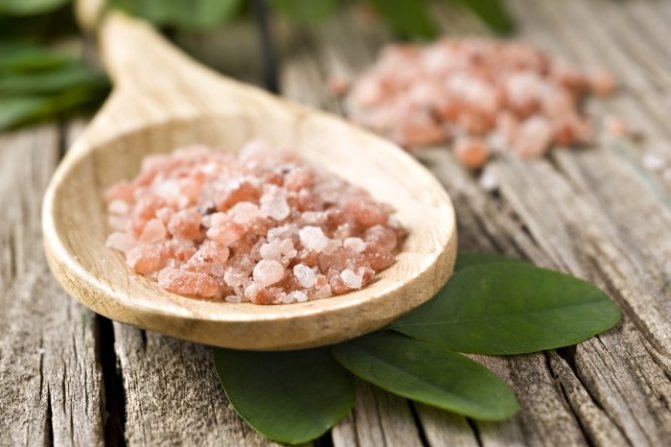
Possible harm to the baby's body
Mothers often ask why pickles are not allowed while breastfeeding. They can have a laxative effect on the child's stool. Also, pickled cucumbers can cause discomfort in his stomach and colic.
In rare cases, they can provoke an allergic reaction. This occurs as a result of individual intolerance to the product or the influence of chemicals used in growing vegetables.
Many unscrupulous producers supply large amounts of nitrates when harvesting. This leads to the following unpleasant symptoms: nausea, diarrhea, abdominal pain, fever. Therefore, you should buy cucumbers from trusted sellers after reading the necessary documentation.
Of course, the mother’s body neutralizes the bulk of harmful substances and will not allow them to reach the baby. However, the quality of cucumbers can affect the composition of breast milk.

Harm from excess salt
But excessive consumption of sodium chloride and salty foods is very harmful to the body. First of all, this substance clogs the ducts and prevents fluid from coming out in the required volume. As a result, fluid accumulates in the body, causing severe swelling. This is especially harmful during lactation, because it is due to the fluid that breast milk is produced.
Excess salt puts a strong strain on the functioning of internal organs and increases the risk of various diseases. First of all, these are diseases of the heart and blood vessels, problems in the functioning of the kidneys and liver, and the urinary system. This provokes heart attacks and strokes and increases blood pressure.

Large amounts of salt cause thirst and contribute to weight gain. To avoid extra pounds, replace the seasoning with a product with the required sodium content. In this case, seaweed, cheese, fresh herbs and garlic, dairy products and fermented milk drinks, and sea fish are suitable. Eating foods containing sodium will provide the body with the required amount of salt. It will also reduce your food needs, which will help you lose weight.
Rules of use
Many people ask if it is possible to pickle cucumber while breastfeeding. All the reasons why they should not be included in the diet are known. Therefore, it is necessary to minimize all risks from eating cucumbers during lactation. It is recommended to adhere to the following tips:
- It is best for women to avoid industrial canning due to the presence of dangerous chemicals in it. It is best to include cucumbers that are canned at home in your diet.
- Under no circumstances should you eat such food until your baby is 3 months old.
- A nursing mother can eat no more than 2-3 cucumbers per day.
- They should not be consumed on an empty stomach. They are best used as a savory snack with other foods.
Like any other food, cucumber is introduced gradually, while observing the baby's reaction. A woman can try a small piece in the first half of the day. Next, you should observe the child’s behavior. If no negative symptoms were found, then increase the portion. Pickles can also be included in multi-ingredient dishes such as vinaigrette.
Even adults can experience bloating from salty foods, let alone a baby with an immature digestive tract. If the baby’s colic intensifies and flatulence occurs, then perhaps this is a negative reaction to the pickles eaten by the mother. In addition, ingredients such as spices and vinegar negatively affect the formation of intestinal microflora, which can lead to the development of dysbiosis.
If a woman has a tendency to edema, this can be detrimental. During breastfeeding, the kidneys are already overloaded due to the need to filter the increased volume of blood. Therefore, they do not need excess liquid. It is well known that it is salt that retains water in the body.
All things considered, some women have to give up pickles until their child is 1 year old.
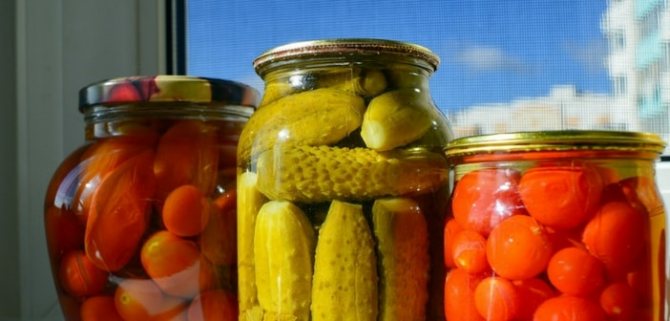
When can you give salt to a baby?
Many parents are concerned about the question at what age should their child start adding salt to their food. It is recommended to do this no earlier than a year. The fact is that the baby’s body is still adapting to adult food and new conditions. He still can't cope with heavy foods and salt.
In addition, the baby does not yet have a salt recipe, and he will not notice the bland taste of food. However, if you add salt to the food from the first feeding, he will get used to this taste in a short time and in the future will refuse to eat unsalted foods.
A child under one year old needs enough salt, which contains breast milk or formula, vegetable, fruit and meat complementary foods, kefir and dairy products. Be sure to let your baby taste the natural “pure” taste of vegetables, fruits, meat and fish, cereals and other products during the first feeding.
The daily norm of sodium chloride for a child up to ten months is 0.2 g. At the age of 10-12 months, the norm increases to 0.35 g. This volume can easily be found in the products that the baby consumes. At 1-3 years old, a child should receive no more than three grams of salt.
After twelve months, they begin to add a little salt to the baby’s food. However, if the baby refuses such food, do not insist or force the baby to eat, but return to bland food. Add salt gradually and do not over-salt your dishes! Be sure to heat treat the product, that is, add salt during cooking, and do not add salt to the finished dish.
Children under five years old should not use sea salt! You can add a little iodized or stone-type additive. Try to replace salt for both yourself and your child with foods containing sodium. To improve the taste of food, you can use safe sauces, sour cream and lemon juice, chopped fresh herbs. By the way, read here what homemade sauce you can prepare for a small child.
How to choose
Many women ask whether pickled cucumber can be included in the diet while breastfeeding. To prevent the product from harming the child’s body, you should be careful when purchasing them in a store.
It is best for women to eat pickles prepared at home. This way you can avoid negative effects on the baby’s body.
But if a woman decides to choose a jar of cucumbers in a store, then she should pay attention to the integrity of the lid, which in no case should be damaged or swollen, as well as the expiration date. If cucumbers are sold in glass jars, then the brine in them should be transparent. If it becomes cloudy, then you should refuse such a purchase.

